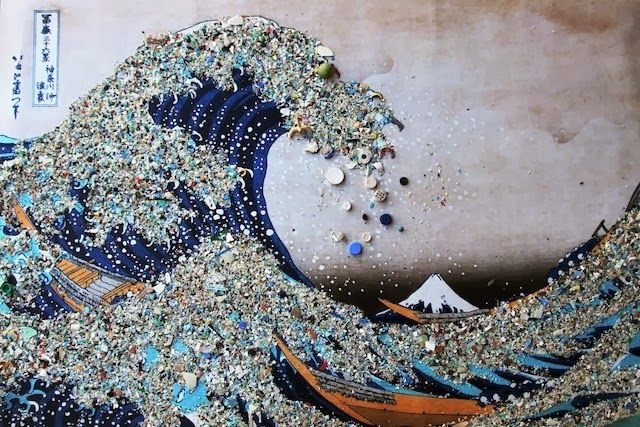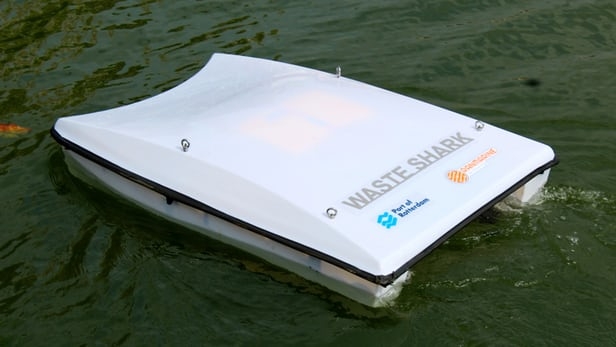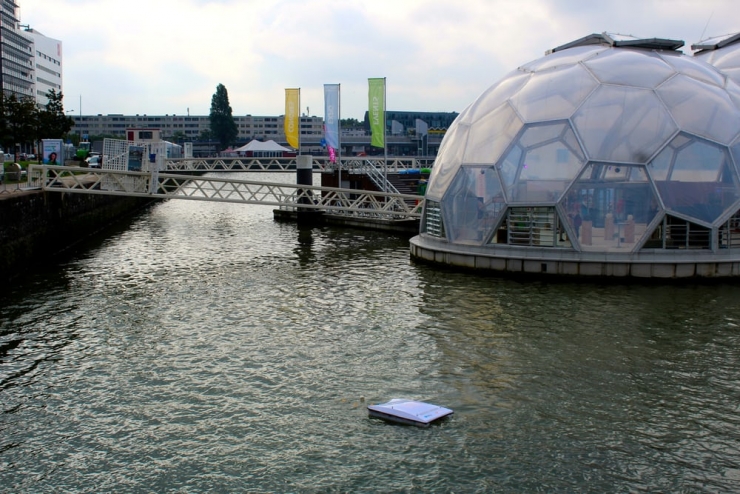
Up to 80% of marine debris comes from land-based waste, and most of them are plastic waste. They often become the culprits in the killing of marine life. For example, turtles often eat plastic bags and cannot eat because they block the stomach. Finally starved to death.
These plastic products do not sink to the bottom of the sea at first, they will float on the sea for a while, and this is a good time to clean them up.
Richard Hardiman, an entrepreneur from South Africa, is working on a water drone named “Waste Sharkâ€, which can autonomously cruise around the port and “eat†more than 400 all the way. Pounds (about 180kg) of marine litter. Currently Fatboy and Slim are two models.

Drawings from Newatlas
WasteShark is currently undergoing tests in the Port of Rotterdam in the Netherlands. In Hadiman's view, it is essentially a water sweeping robot.
People use sweeping robots at home to remove dust without having to look after them. Hadiman said: "While the main design philosophy of WasteShark is to allow it to continuously clean up the water surface, you will never see rubbish piled up. The more timely the water surface debris is cleaned, the less waste it will sink into. Under the sea, it will be more laborious to clean up from the bottom of the sea."
At the bottom of the WasteShark is a shovel and a water outlet that collects garbage. The shovel sweeps the surface of the water and collects the floating garbage. Then it is transferred to a storage tank on board the ship and finally moved to the shore for disposal.

Drawings from Newatlas
In addition to collecting garbage, WasteShark also has the ability to collect data such as water quality, depth and weather conditions, which can be sent to the port authorities in real time.
Hadiman said: "I don't want to invent robots that will take people out of work. I'm from Africa. The last thing I want to do is increase the unemployment rate." So, on the one hand, he wanted to improve human life by inventing robots. To ensure that this kind of robot does the work, the manpower cannot do the job effectively, and will not cause some people to lose their jobs.
In the early stages, Hadiman tried to lock floating debris by using machine vision. Unfortunately, water and image perception are difficult to combine because light enters the water and there is always reflection and refraction, making it difficult to identify objects. "As a result, we still returned to the route planning." Hadiman said.
A drone is often in a fixed sea area. Hadiman's team has let the software system carried by WasteShark learn that in some specific tides, wind directions, and weather conditions, garbage will accumulate in most places. Afterwards, WasteShark will return to a specific location and take away the trash when similar circumstances occur. This method is more effective than you think.

Drawings from Newatlas
At present, Hadimann's team has signed a contract with the Port of Rotterdam, and they plan to expand this technology worldwide. Moreover, they are also developing a larger solar-powered "Great Waste Shark" that will once be able to "swallow" more than 1,000 pounds (about 450 kg) of garbage.
Via Digital Trends
Extended reading:
Oil industry robots on uninhabited islands: check safety valve, smell gas, prevent explosion
New in the Catering Industry: Silicon Valley company Zume lets robots participate in pizza production
Smart Remote,Wireless Remote,Rf Remote Control,Learning Remote Control
Shenzhen Chaoran Technology Corp. , https://www.chaoran-remote.com